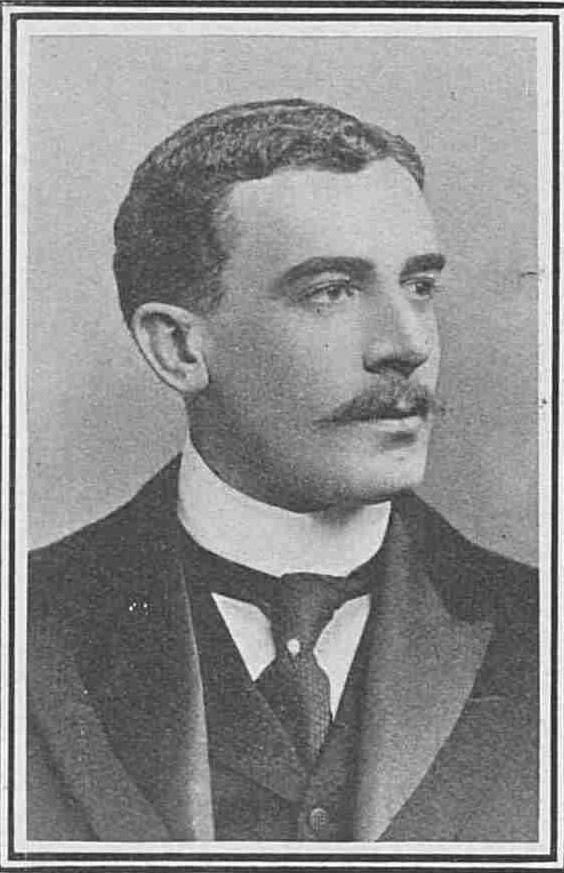Among the survivors of the Siege of Delhi there are eight winners of the Victoria Cross. Two of these are absent from this group, General Sir Dighton Probyn and Sir E.T Thackeray.

On following the retreating enemy on 2 January 1858, at Khodagunge, he saw in the distance two Sepoys going away with a standard. Lieutenant Roberts put spurs to his horse, and overtook them just as they were about to enter a village. They immediately turned round, and presented their muskets at him, and one of the men pulled the trigger, but fortunately the caps snapped, and the standard-bearer was cut down by this gallant young officer, and the standard taken possession of by him. He also, on the same day, cut down another Sepoy who was standing at bay, with musket and bayonet, keeping off a Sowar. Lieutenant Roberts rode to the assistance of the horseman, and, rushing at the Sepoy, with one blow of his sword cut him across the face, killing him on the spot.
General Sir Hugh Gough VC
Date of Acts of Bravery, 12th November, 1857, and 25th February, 1858
Lieutenant Gough, when in command of a party of Hodson’s Horse, near Alumbagh, on the 12th of November, 1857, particularly distinguished himself by his forward bearing in charging across a swamp, and capturing two guns, although defended by a vastly superior body of the enemy. On this occasion he had his horse wounded in two places, and his turban cut through by sword cuts, whilst engaged in combat with three Sepoys.
Lieutenant Gough also particularly distinguished himself, near Jellalabad, Lucknow, on 25 February 1858, by showing a brilliant example to his Regiment, when ordered to charge the enemy’s guns, and by his gallant and forward conduct, he enabled them to effect their object. On this occasion he engaged himself in a series of single combats, until at length he was disabled by a musketball through the leg, while charging two Sepoys with fixed bayonets. Lieutenant Gough on this day had two horses killed under him, a shot through his helmet, and another through his scabbard, besides being severely wounded.
General Sir Charles Gough. VC
Date of Acts of Bravery, 15th and 18th August, 1857, and 27th January, and 23rd February, 1858
First, for gallantry in an affair at Khurkowdah, near Rhotuck, on the 15 August 1857, while serving with Hodson’s Horse, in which he saved his brother, who was wounded, and killed two of the Enemy.
Secondly, for gallantry on 18 August, when he led a Troop of the Guide Cavalry in a charge, and cut down two of the Enemy’s Sowars, with one of whom he had a desperate hand to hand combat.
Thirdly, for gallantly on 27 January 1858, at Shumshabad, where, in a charge, he attacked one of the Enemy’s leaders and pierced him with his sword, which was carried out of his hand in the melee. He defended, himself with his revolver, and shot two of the Enemy.
Fourthly, for gallantry on 23 February, at Meangunge, where he came to the assistance of Brevet-Major O. H. St. George Anson, and killed his opponent, immediately afterwards cutting down another of the Enemy in the same gallant manner.
Colonel T Cadell VC
For having, on the 12th of June, 1857, at the Flag-staff Picquet at Delhi, when the whole of the Picquet of Her Majesty’s 75th Regiment and 2nd European Bengal Fusiliers were driven in by a large body of the enemy, brought in from amongst the enemy a wounded Bugler of his own regiment, under a most severe fire, who would otherwise have been cut up by the rebels. Also, on the same day, when the Fusiliers were retiring, by order, on Metcalfe’s house, on its being reported that there was a wounded man left behind, Lieutenant Cadell went back of his own accord towards the enemy, accompanied by three men, and brought in a man of the 75th Regiment, who was severely wounded, under a most heavy fire from the advancing enemy.
General Sir James Watson VC
Lieutenant Watson, on the 14th November, with his own squadron, and that under Captain, then Lieutenant, Probyn, came upon a body of the rebel cavalry. The Ressaldar in command of them a fine specimen of the Hindustani Mussulman and backed up by some half dozen equally brave men, rode out to the front. Lieutenant Watson singled out this fine-looking fellow and attacked him. The Ressaldar presented his pistol at Lieutenant Watsons breast, at a yards distance, and fired; but, most providentially, without effect; the ball must, by accident, have previously fallen out. Lieutenant Watson ran the man through with his sword, and dismounted him; but the native officer, nothing daunted, drew his tulwar, and with his Sowars renewed his attack upon Lieutenant Watson, who bravely defended himself until his own men joined in the melee, and utterly routed the party.
In this rencontre, Lieutenant Watson received a blow on the head from a tulwar, another on the left arm, which severed his chain gauntlet glove, a tulwar cut on his right arm, which fortunately only divided the sleeve of the jacket, but disabled the arm for some time; a bullet also passed through his coat, and he received a blow on his leg, which lamed him for some days afterwards.
The Graphic 8th June 1907.
London Gazette.


